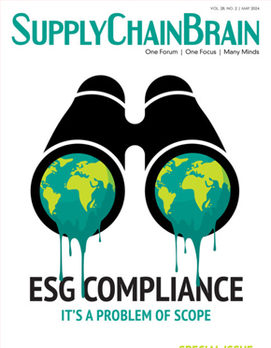
The mantra today is “try before you buy.” What it amounts to is enabling a type of customer behavior that has caused apparel sellers headaches for years.
It all dates back to the heyday of catalog sales, when customers would order more sizes or styles than they intended to keep, try them on, then send back the unwanted items.
Retailers were forced to cope with large volumes of returns, becoming experts in the art of reverse logistics. And the situation has only gotten more intense with the rise of e-commerce. It’s not uncommon for e-tailers today to experience return rates of up to 25 percent of sales.
Accepting returns as a fact of life, they have gone so far as to ease the process for consumers by including preprinted return labels, and even packaging, in their shipments. Now, seeking dominance in an increasingly competitive world, they’re doubling down on the process.
Amazon, not surprisingly, helped to kick off the trend with its announcement last fall of a “try before you buy” program, involving a nominal fee. A handful of other sellers have jumped in since then, including ASOS, the U.K.-based fast-fashion purveyor, and eyeglass seller Warby Parker.
Some have made the idea the very basis of their offering. Take Nordstrom’s Trunk Club, the subscription-based service that ships out curated selections of clothing periodically and invites buyers to return whatever they don’t wish to keep.
More common, however, are allowances being made by traditional apparel merchandisers that are attempting to convert a necessary evil into a selling point. In the event, they are saddling themselves with a substantial logistics challenge.
Many e-tailers are already struggling with inventory backlogs in the distribution center caused by returns. Now, they’re certain to see those flows intensify. New strategies for coping with a flood of unwanted product are desperately needed.
The practice of including preprinted return labels in shipments has made things more difficult for sellers, according to Luke Starbuck, vice president of marketing with Linc Global, Inc., provider of a platform for automating customer care. It allows customers to return product without informing retailers of their decision beforehand. As a result, the latter have no idea of what’s coming back until the items hit the returns center.
As return rates increase, some retailers are likely to stop including the labels and require customers to request acceptance of the return through some form of conversational channel, Starbuck says. While that action poses an inconvenience to customers, it gives retailers prior notice and visibility of what’s in the returns pipeline. It also allows them to capture the reason for a return, and in the process do a better job of planning over time for spikes in activity.
In addition, retailers must find ways to defray the cost of higher return rates. Some, like Amazon, will assess a fee for the privilege of “try before you buy.” Those with less market clout might be forced to offer refunds or credit for returns, possibly restricting the perk to their best customers.
A good part of the solution, notes Starbuck, lies with people — specifically, a lot more of them. They’re needed in the warehouse, not just to process the increasing volume of returns, but to meet rising customer demands for faster crediting and, when requested, exchanges.
To a large extent, the problem of handling bigger return volumes is one of scale. Many retail stores lack the backroom space needed to stock returned items, even temporarily. Warehouses, too, might be too small to cope with the additional volume.
But it’s more than a question of simply getting bigger. The way that distribution centers are configured must change, too. Even now, there aren’t enough facilities in the U.S. set up to deal with the unique requirements of e-commerce. According to a new report by CBRE Group, Inc., the big commercial real estate services and investment firm, the vast majority of warehouses in the country are “decades old and ill-suited for the demands” of that sector.
While approximately 1 billion square feet of construction has been added over the last decade, CBRE says, the average age of warehouses has risen to 34 years from 26 during that period. Most facilities constructed prior to the mid-2000s are inadequate to the needs of e-commerce, let alone the management of returns.
When it comes to returns, it’s not just a matter of increased orders, says Starbuck. The number of items per order is rising as well. Moreover, e-tailers must step up their ability to assess the condition of merchandise and the reason for its return. That requires a much higher level of communication with the customer, who is certain to demand more frequent status reports on the items in question.
All of this is taking place against a backdrop of labor scarcity. With nationwide unemployment likely to dip below 4 percent in the coming months, it’s becoming increasingly difficult for warehouses to find people willing to perform the repetitive tasks that are common to warehouse work.
Automation will help — many warehouses are embracing robotics and artificial intelligence in a bid to streamline operations and control costs — but human resources are still needed. Following the example of mobile phone manufacturers, many e-tailers are likely to turn to independent logistics providers with expertise in receiving and processing returns.
Like any new offering intended to differentiate a seller in the marketplace, “try before you buy” will eventually become so prevalent as to constitute the price of admission for brands and e-tailers. For now, however, it remains an attractive feature that can help players to stand out in the age of Amazon — provided they can solve the thorny logistical challenges.
“If brands can build this into their margin and make it part of the customer journey,” says Starbuck, “they’ll have the ability to steal some wallet share.”







